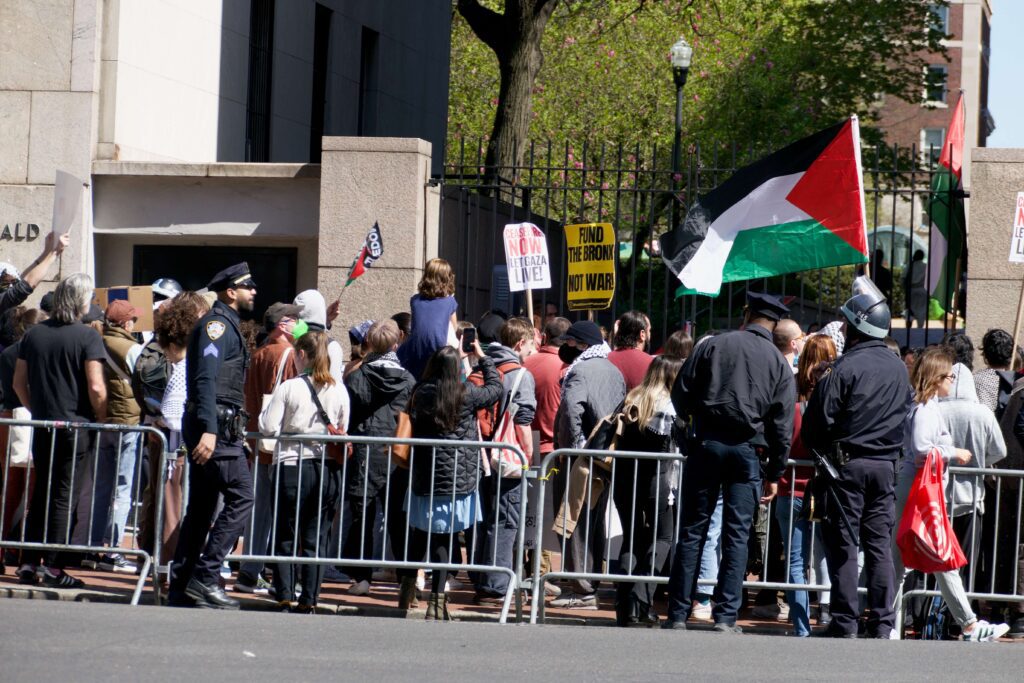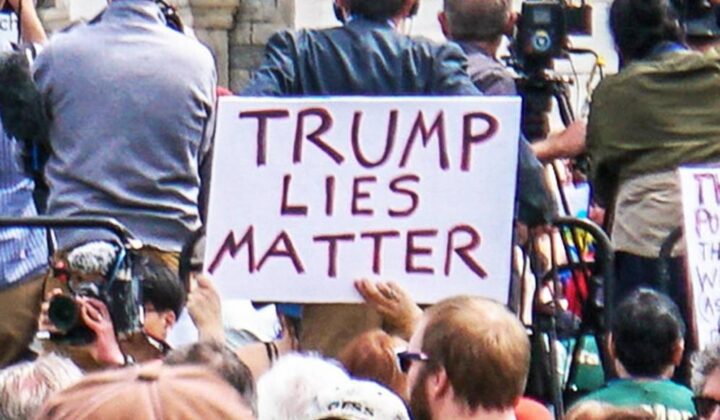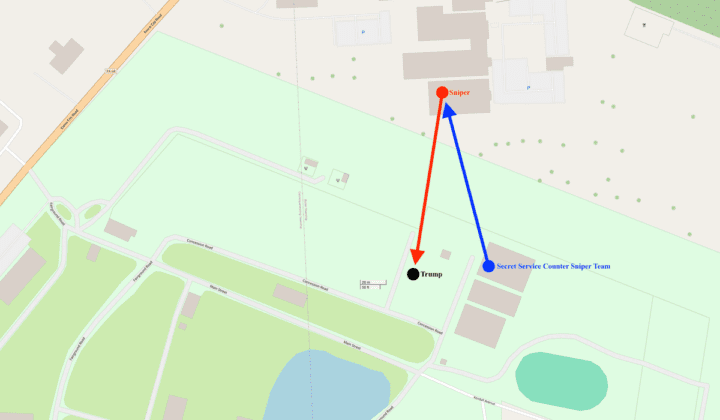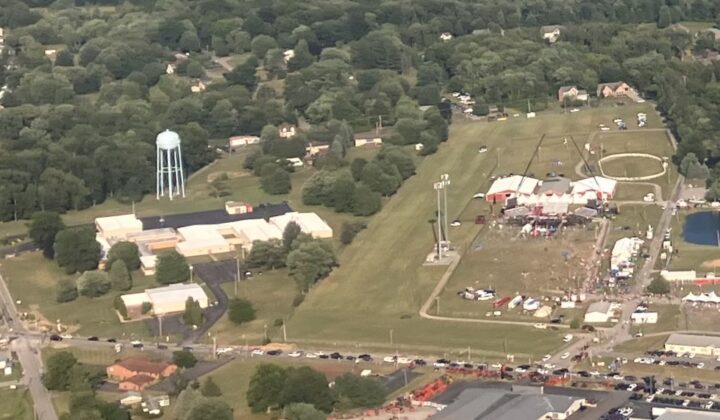Students on US college campuses protesting Israel’s war with Hamas beg the question.

In nearly every presidential election year, there are few crises that can capture the nation’s attention so fully, that they are all but guaranteed to have an outsized impact on an election outcome. In 2020, it was the COVID-19 pandemic. And in 2024, it appears to be the war between Israel and Hamas in Gaza.
President Biden’s handling of the grievous situation in the Middle East has been met with sharp criticism from both the Left and the Right. Senator Bernie Sanders called it Biden’s “Vietnam.” The White House may not like that comparison, but it seems apt in light of the protests roiling some of the nation’s most elite academic institutions, much as they did during the Vietnam era more than 50 years ago.
Recently in this newsletter, we explored the current state of the First Amendment with respect to freedom of speech. In this issue, we’ll undertake a similar examination of the freedom to assemble, with a focus on how American college students are reacting to the war, how authorities are responding, and what it all means for American democracy writ large. —Melissa Amour, Managing Editor

“There is a right to protest. But there is not a right to cause chaos.”
Student protests calling on universities to divest from Israel began last month at Columbia University, and have since spread to UCLA, Harvard, Princeton, the University of Pennsylvania, New York University, Emory University, the University of Chicago, and dozens of other schools.
University officials have had to maintain a terribly tricky balance between defending free speech while condemning unsafe conduct that is unprotected by the Constitution. The turmoil on campuses nationwide has resulted in public calls for the resignation of college officials—either for not acting decisively enough to quell the protests, or conversely, for allegedly violating protesters’ Constitutional rights.
These incidents have demonstrated how much America’s foreign affairs can confuse and disrupt our domestic political culture. But regardless of one’s position on US foreign policy, Americans all have the Constitutionally protected right to peaceably assemble and express their views. The question now at the heart of campuses nationwide is an enduring one: What does protest mean in America?
What You Should Know
Central to navigating recent protest controversies is understanding the distinction between protected speech and unprotected conduct. Legitimate forms of protest do not include using violent rhetoric and imagery, forcefully overtaking college buildings, or vandalizing property, as have occurred on some campuses.
“Destroying property is not a peaceful protest. It’s against the law. Vandalism, trespassing, breaking windows, shutting down campuses, forcing the canceling of classes and graduations—none of this is a peaceful protest.” —President Joe Biden
So far, police officers have arrested or detained more than 2,300 protesters on campuses across the country. Some have condemned the arrests as a blatant violation of protesters’ First Amendment rights.
“The encampment tents went up around 6:45pm. And the earliest I can pin it is, a student, by 7pm, told me that she saw one of the two militarized units that ultimately came to campus staging nearby. … It was the nerdiest Dartmouth protest you can imagine. And the fact that the students met, basically, a paramilitary force, is just unbelievable.” —Author, journalist, and Dartmouth instructor Jeff Sharlet
Police have also been accused of making matters worse by shooting non-lethal bullets at protesters, employing facial recognition technology to identify counter-protesters, and potentially using advanced surveillance powers to weed out organizers.
“I think it’s really important to point out that there are a number of campuses at which the university has decided to take a hands-off approach to these encampments. MIT is one. Berkeley is another. And at these, the encampments have been proceeding with very little issue and very little drama.” —Dr. Angus Johnston, professor and historian at the City University of New York
But while students’ freedom to protest remains widely protected under public and many private universities, there are a few notable caveats student protesters must heed. And although the right to protest is absolute, the government and private institutions can impose time, place, and manner restrictions on protests in the name of public safety.
“In recent months and weeks we’ve witnessed an alarming trend of escalating harassment, intimidation, and violence targeted at marginalized groups on our campuses. This obviously threatens the safety and well-being of our students, faculty, and staff. It threatens the educational environment, and it threatens the free exchange of ideas.” —California State Sen. Steve Glazer, a state university system trustee
How We Got Here
Some of the most violent clashes between police and college students took place in 1968 during anti-Vietnam War protests. The violence culminated two years later, with the Kent State University massacre, in which the Ohio National Guard fired on unarmed student protesters. These events established a “never again” stance that has endured for more than 50 years. The Supreme Court further cemented this view with a ruling in 1972.
“[The Supreme Court rejects the premise that] because of the acknowledged need for order, First Amendment protections should apply with less force on college campuses than in the community at large. Quite to the contrary: the vigilant protection of Constitutional freedoms is nowhere more vital than in the community of American schools.” —Healy v. James decision
For some, protest means breaking the rules to move the needle—which may seem shocking at the time, but later may appear to be courageous. But after decades of relative peace on campuses, the current protests look exceptionally violent to the generations with no living memory of 1968.
“Protests often involve skirting or outright breaking rules. Rosa Parks was breaking the rules about where to sit. The activists who were sitting in at restaurant counters that were segregated were likewise breaking rules about where they should sit.” —Olúfẹ́mi Táíwò, assistant professor of philosophy at Georgetown University
When it comes to protesting in the US, Americans tend to draw the line at violence or other criminal behavior. Right now, most Americans view the protests as more riotous than peaceful. Recent polling shows that Americans are more likely to strongly or somewhat oppose than support the pro-Palestinian protesters.
“[I]f you are only watching the same four clips of these incidents amplified by mainstream and social media, you aren’t getting the full story. The media likes to focus heavily on extremist fringes and the specific missteps of student movements or individuals. Protests movements are complicated and messy, in 1968 or 2024.” —Lily Forand, freelance video journalist who visited the Columbia University encampment
What People Are Saying
To be sure, the protests have produced truly vile and ridiculous viral moments which have helped shape the public’s opinion of them. At Columbia and elsewhere, some protesters have used unacceptable, intimidating rhetoric and have even physically denied Jewish students access to certain areas of campus—a clear violation of protest rights.
“The university finds it hard to condemn these acts due to the guise that the pro-Palestinian students are using freedom of speech…[but] it does not give you the ability to threaten, to call for violence.” —Jade Steinberg, University of Texas at Dallas freshman
Counter-protesters—like those at UCLA—have also blatantly violated protest rights by throwing objects and even shooting fireworks at pro-Palestinian encampments. But numerous students across the country, including Jewish students, have stepped forward to condemn these incidents.
“At every turn, I have encountered a community of activists and organizers that is eager to listen, ready to learn, and committed to including Jewish voices and perspectives.” —Ian Berlin, Yale University senior
Many students and faculty members hold outside agitators responsible for causing chaos within campus protests. Police in New York note that roughly 30 percent of those arrested at Columbia were not affiliated with the school. Protest supporters also point to the harsh tactics used by some law enforcement officers as an exacerbating factor.
“Inviting armed police into a campus protest environment, even a volatile one, can create unacceptable risks for all students and staff… Moreover, arresting peaceful protestors is also likely to escalate, not calm, the tensions on campus…” —Anthony D. Romero, executive director, and David Cole, legal director, of the American Civil Liberties Union
University officials are in the unenviable position of balancing the First Amendment rights of protesters with the right of other students to receive the education they paid for in a safe environment free from harassment.
“Colleges and universities are open forums. This is a place where ideas are welcomed, and students are allowed to speak up. That includes by sending statements…and engaging in protests on the quad. At the same time, the university has a mission that it has to fulfill, which is educating students. So anything that materially or substantially interferes with that mission is something the university has an interest in protecting.” —Dr, Adam Kunz, constitutional law professor at the University of Wisconsin-Eau Claire
Ultimately, as Americans, we all face the same challenge in our own spheres of activity, which is why the protests have lasting historical importance beyond just their substance.
“The First Amendment grants the right to free speech, protest, and assembly, allowing for a marketplace of ideas where power never goes unchallenged and every person can have and express their own perspective. … This amendment is the cornerstone of our democracy. It is the backbone of progress that has defined the United States for over half a century; to deny its protection to citizens peacefully protesting is a disservice to history and our future.” —The Suffolk Journal Editorial Board, Suffolk University

- Detention of independent journalist, activists at UCLA draws outcry —Los Angeles Times
- Ole Miss opens conduct investigation following protest confrontation —NBC News
- Some college students shrug at nationwide campus protests —Axios
- Republican House members suggest laws sending campus protesters to Gaza —The Washington Examiner
- The controversy surrounding the antisemitism bill —US News & World Report

- Greene with envy: House overwhelmingly votes against ousting Speaker Mike Johnson —The Washington Post
- So much winning: Trump secures more wins in bids to slow criminal prosecutions —Reuters
- It’s not just for Russia anymore: The New Propaganda War —The Atlantic
- Food for thought: Majority of Americans concerned about democracy —Citizen Data
- Give this a listen: Democratic institutions don’t defend themselves. We do —The UnPopulist

- European Union: EU to use frozen Russian assets to aid Ukraine’s recovery and defense —Axios
- Israel: US withheld bomb shipment to Israel out of fears it could be used in Rafah —ABC News
- Panama: Last-minute candidate José Raúl Mulino heads to victory in Panama presidential election —Associated Press
- Russia: US soldier detained in Russia and accused of stealing, officials say —NBC News
- Ukraine: Ukraine arrests two officials for treason over alleged Zelensky assassination plot —CNN

Hey Topline readers, you remember the drill. We want to hear your reactions to today’s stories. We’ll include some of your replies in this space in our next issue of The Topline. Click here to share your take, and don’t forget to include your name and state. We’re looking forward to hearing from you!





